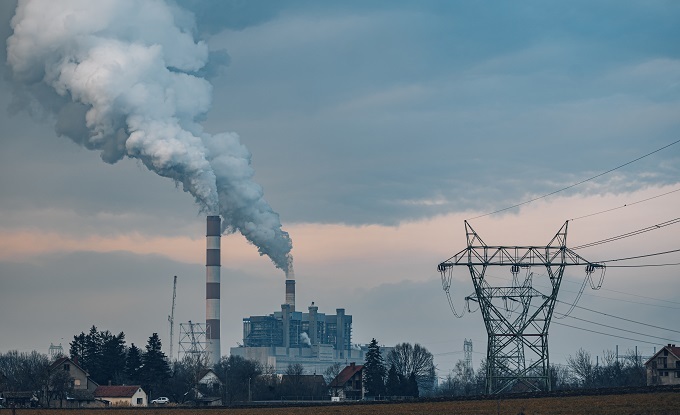
- Trending Categories
 Data Structure
Data Structure Networking
Networking RDBMS
RDBMS Operating System
Operating System Java
Java MS Excel
MS Excel iOS
iOS HTML
HTML CSS
CSS Android
Android Python
Python C Programming
C Programming C++
C++ C#
C# MongoDB
MongoDB MySQL
MySQL Javascript
Javascript PHP
PHPPhysics
Chemistry
Biology
Mathematics
English
Economics
Psychology
Social Studies
Fashion Studies
Legal Studies
- Selected Reading
- UPSC IAS Exams Notes
- Developer's Best Practices
- Questions and Answers
- Effective Resume Writing
- HR Interview Questions
- Computer Glossary
- Who is Who
What is the full form of EHOC?
Introduction
Electrically Heated Oxidation Catalysts (EHOCs) are a type of exhaust after treatment system that is designed to reduce harmful emissions from internal combustion engines, particularly diesel engines. EHOCs are capable of reducing emissions of pollutants such as nitrogen oxides (NOx), hydrocarbons (HC), and carbon monoxide (CO).

EHOCs are composed of a ceramic substrate that is coated with precious metals, typically platinum, palladium, and rhodium. These metals act as catalysts to speed up the chemical reactions that convert the harmful pollutants in engine exhaust into less harmful substances.
EHOCs have an integrated electric heater that provides heat to the catalyst substrate, allowing it to reach its optimal operating temperature quickly, even during cold starts. This helps to reduce emissions during the start-up phase of an engine, which is when a significant amount of pollutants are typically emitted.
Working Principle of EHOC
The working principle of an Electrically Heated Oxidation Catalyst (EHOC) involves the use of precious metals to catalyze the oxidation of harmful pollutants in engine exhaust. The EHOC is a ceramic substrate that is coated with these precious metals, which are typically platinum, palladium, and rhodium. The substrate is designed to provide a large surface area for the catalytic reaction to take place.
EHOCs are electrically heated to reach their optimal operating temperature quickly. This is important because the effectiveness of the catalyst is dependent on it being at a certain temperature range. The electric heater is integrated into the EHOC and provides heat to the substrate, allowing it to reach its optimal operating temperature within a few seconds. This is particularly important during cold starts when the engine and the EHOC are at a low temperature, and the catalyst is less effective.
Once the EHOC has reached its optimal operating temperature, the engine exhaust gases flow over the substrate, and the precious metals catalyze the oxidation of harmful pollutants such as carbon monoxide (CO), hydrocarbons, and nitrogen oxides (NOx) into less harmful substances such as carbon dioxide (CO2), water (H2O), and nitrogen (N2).
The EHOC is designed to operate continuously and is integrated into the exhaust system of the engine. It is often used in combination with other exhaust aftertreatment systems such as Diesel Particulate Filters (DPF) and Selective Catalytic Reduction (SCR) systems to further reduce emissions from diesel engines. Overall, the EHOC is an effective solution for reducing emissions from diesel engines and meeting stringent emission regulations.
Applications of EHOC
Electrically Heated Oxidation Catalysts (EHOCs) are commonly used in internal combustion engines, particularly diesel engines, to reduce harmful emissions. EHOCs have a wide range of applications in various industries, including −

Automotive industry: EHOCs are commonly used in diesel engines in cars, trucks, and buses to meet stringent emission regulations. EHOCs are often used in combination with other after treatment systems such as Diesel Particulate Filters (DPF) and Selective Catalytic Reduction (SCR) systems to further reduce emissions.
Construction industry: EHOCs are used in construction equipment such as excavators, bulldozers, and loaders to reduce emissions of pollutants from diesel engines.
Marine industry: EHOCs are used in marine engines to reduce emissions of harmful pollutants such as nitrogen oxides (NOx), carbon monoxide (CO), and hydrocarbons from ship exhausts.
Power generation industry: EHOCs are used in stationary diesel engines used for power generation to reduce emissions of pollutants.
Advantages and Limitations of EHOC
Advantages of EHOCs
Effective emissions reduction − EHOCs are highly effective in reducing harmful emissions from diesel engines, particularly during cold starts when engines emit the highest levels of pollutants.
Quick warm-up time: EHOCs are electrically heated, which allows them to reach their optimal operating temperature quickly. This is essential for their effectiveness in reducing emissions.
Low maintenance − EHOCs require minimal maintenance compared to other aftertreatment systems. They have no moving parts, and the precious metal coating is designed to last for the lifetime of the catalyst.
Cost-effective − EHOCs are relatively low-cost compared to other aftertreatment systems such as Diesel Particulate Filters (DPF) and Selective Catalytic Reduction (SCR) systems.
Limitations of EHOCs
Limited effectiveness for reducing nitrogen oxides (NOx) − EHOCs are not as effective at reducing NOx emissions compared to other aftertreatment systems such as Selective Catalytic Reduction (SCR) systems.
Limited operating temperature range − EHOCs have a limited operating temperature range, which means they may not be effective in reducing emissions during high-temperature operating conditions.
Susceptibility to poisoning − The precious metal coating on EHOCs can be poisoned by certain contaminants such as sulfur, which can reduce their effectiveness in reducing emissions.
Limited application − EHOCs are only suitable for reducing emissions from diesel engines and are not effective for reducing emissions from gasoline engines or alternative fuels such as natural gas or propane.
Overall, EHOCs are an effective and cost-efficient solution for reducing emissions from diesel engines, particularly during cold starts. However, they have limitations in reducing NOx emissions and are not suitable for all types of engines and operating conditions.
FAQs
What is EHOC?
EHOC is an aftertreatment system, used in diesel engines to reduce harmful emissions, such as carbon monoxide (CO), hydrocarbons, and nitrogen oxides (NOx), from the engine exhaust.
Where is EHOC used?
EHOCs are used in a variety of applications where diesel engines are used. They are an effective solution for reducing emissions from diesel engines in various industries like Automotive, Construction, Marine and Power generation industries.
What are the disadvantages of EHOC?
While EHOCs have many advantages, there are also some disadvantages associated with their use. These include limited effectiveness for reducing nitrogen oxides (NOx), limited operating temperature range, susceptibility to poisoning, and higher fuel consumption.

